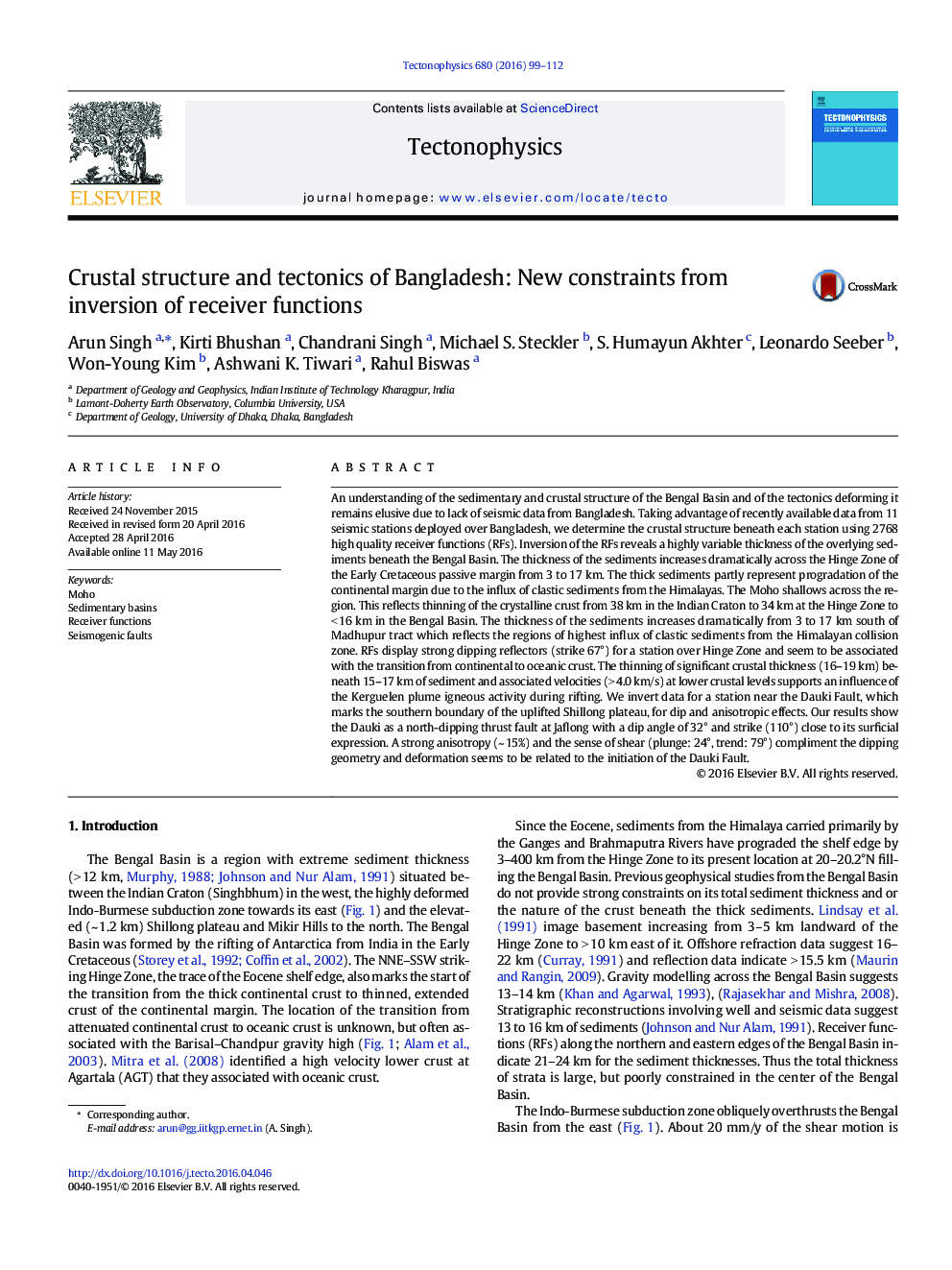| کد مقاله | کد نشریه | سال انتشار | مقاله انگلیسی | نسخه تمام متن |
|---|---|---|---|---|
| 6433349 | 1636718 | 2016 | 14 صفحه PDF | دانلود رایگان |
- We provide first images of receiver functions from Bengal basin.
- Measurement of sediment and crustal thickness across transition from craton to Bengal Basin
- New constraints on the geometry of Dauki Fault bounding Shillong plateau
An understanding of the sedimentary and crustal structure of the Bengal Basin and of the tectonics deforming it remains elusive due to lack of seismic data from Bangladesh. Taking advantage of recently available data from 11 seismic stations deployed over Bangladesh, we determine the crustal structure beneath each station using 2768 high quality receiver functions (RFs). Inversion of the RFs reveals a highly variable thickness of the overlying sediments beneath the Bengal Basin. The thickness of the sediments increases dramatically across the Hinge Zone of the Early Cretaceous passive margin from 3 to 17 km. The thick sediments partly represent progradation of the continental margin due to the influx of clastic sediments from the Himalayas. The Moho shallows across the region. This reflects thinning of the crystalline crust from 38 km in the Indian Craton to 34 km at the Hinge Zone to < 16 km in the Bengal Basin. The thickness of the sediments increases dramatically from 3 to 17 km south of Madhupur tract which reflects the regions of highest influx of clastic sediments from the Himalayan collision zone. RFs display strong dipping reflectors (strike 67°) for a station over Hinge Zone and seem to be associated with the transition from continental to oceanic crust. The thinning of significant crustal thickness (16-19 km) beneath 15-17 km of sediment and associated velocities (> 4.0 km/s) at lower crustal levels supports an influence of the Kerguelen plume igneous activity during rifting. We invert data for a station near the Dauki Fault, which marks the southern boundary of the uplifted Shillong plateau, for dip and anisotropic effects. Our results show the Dauki as a north-dipping thrust fault at Jaflong with a dip angle of 32° and strike (110°) close to its surficial expression. A strong anisotropy (~ 15%) and the sense of shear (plunge: 24°, trend: 79°) compliment the dipping geometry and deformation seems to be related to the initiation of the Dauki Fault.
Journal: Tectonophysics - Volume 680, 12 June 2016, Pages 99-112
